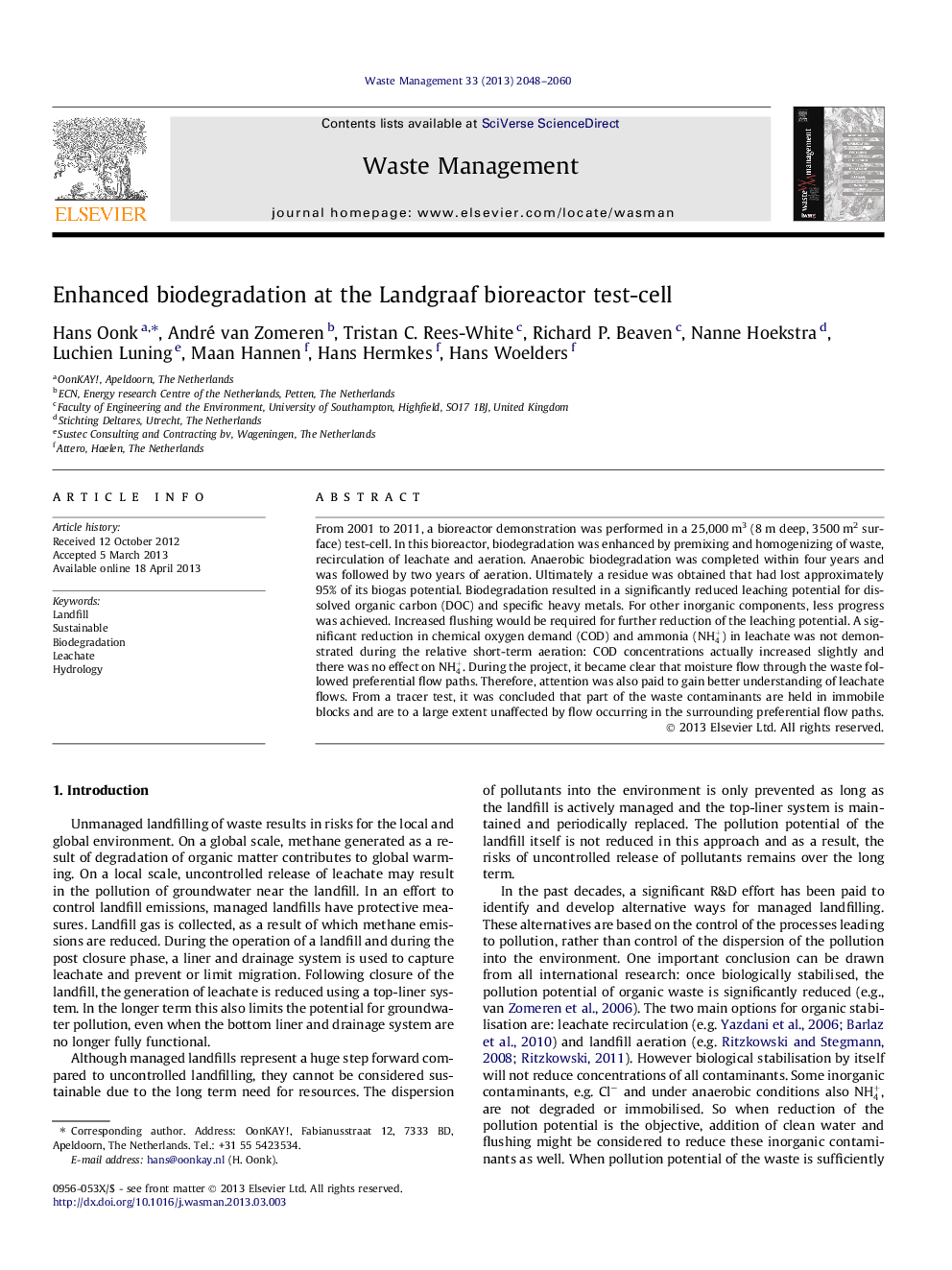| Article ID | Journal | Published Year | Pages | File Type |
|---|---|---|---|---|
| 4471758 | Waste Management | 2013 | 13 Pages |
•Acceleration of biodegradation of waste was demonstrated.•Biodegradation resulted in a significantly reduced leaching potential.•Liquid flow through the waste follows preferential flow paths.•Contaminants are partially held in immobile blocks and only released by diffusion.
From 2001 to 2011, a bioreactor demonstration was performed in a 25,000 m3 (8 m deep, 3500 m2 surface) test-cell. In this bioreactor, biodegradation was enhanced by premixing and homogenizing of waste, recirculation of leachate and aeration. Anaerobic biodegradation was completed within four years and was followed by two years of aeration. Ultimately a residue was obtained that had lost approximately 95% of its biogas potential. Biodegradation resulted in a significantly reduced leaching potential for dissolved organic carbon (DOC) and specific heavy metals. For other inorganic components, less progress was achieved. Increased flushing would be required for further reduction of the leaching potential. A significant reduction in chemical oxygen demand (COD) and ammonia (NH4+) in leachate was not demonstrated during the relative short-term aeration: COD concentrations actually increased slightly and there was no effect on NH4+. During the project, it became clear that moisture flow through the waste followed preferential flow paths. Therefore, attention was also paid to gain better understanding of leachate flows. From a tracer test, it was concluded that part of the waste contaminants are held in immobile blocks and are to a large extent unaffected by flow occurring in the surrounding preferential flow paths.
